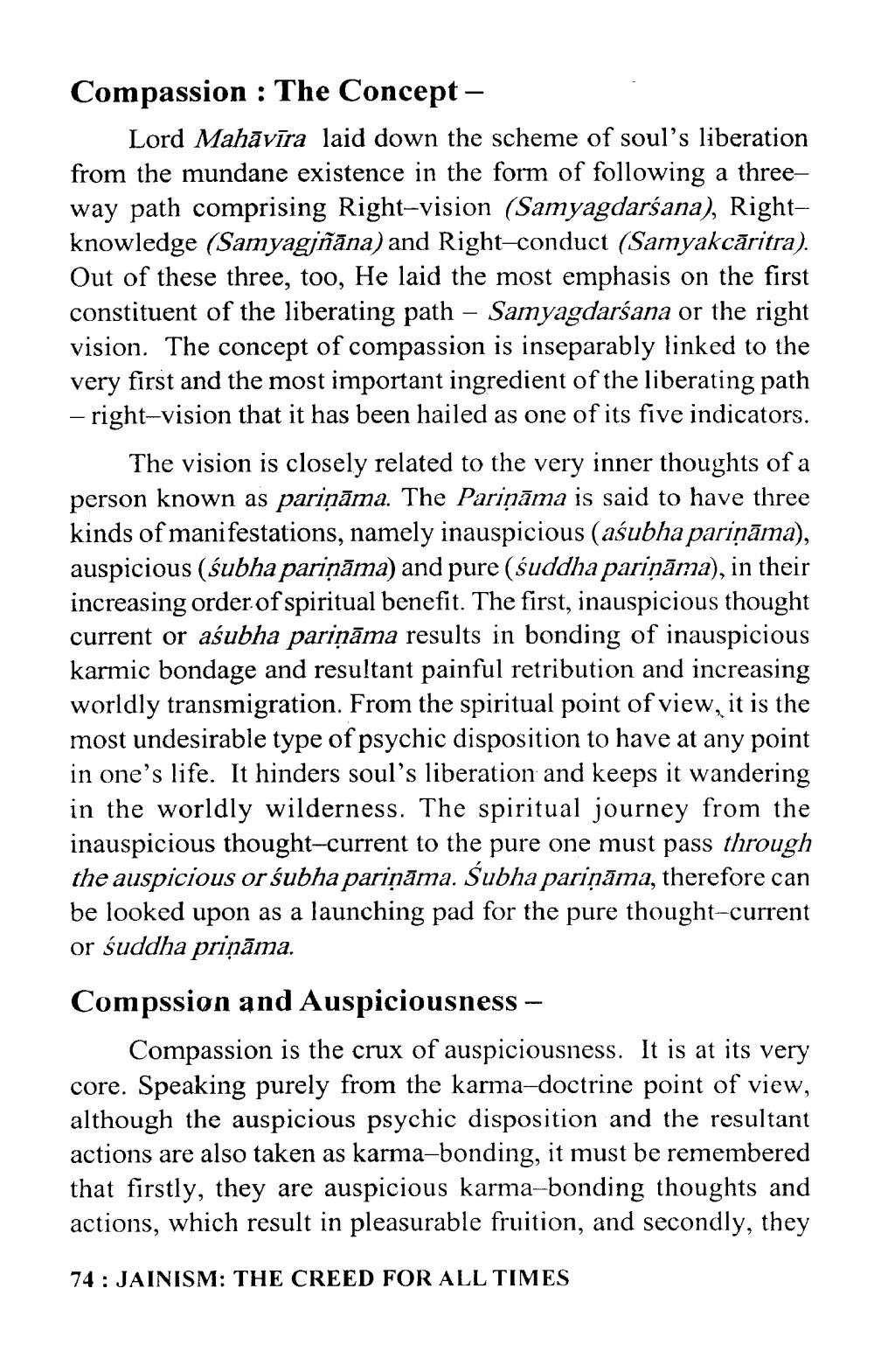________________
Compassion: The Concept
Lord Mahāvīra laid down the scheme of soul's liberation from the mundane existence in the form of following a threeway path comprising Right-vision (Samyagdarśana), Rightknowledge (Samyagjñāna) and Right-conduct (Samyakcāritra). Out of these three, too, He laid the most emphasis on the first constituent of the liberating path - Samyagdarśana or the right vision. The concept of compassion is inseparably linked to the very first and the most important ingredient of the liberating path -right-vision that it has been hailed as one of its five indicators.
The vision is closely related to the very inner thoughts of a person known as pariņāma. The Pariņāma is said to have three kinds of manifestations, namely inauspicious (aśubha pariṇāma), auspicious (subha pariņāma) and pure (suddha pariņāma), in their increasing order of spiritual benefit. The first, inauspicious thought current or aśubha pariṇāma results in bonding of inauspicious karmic bondage and resultant painful retribution and increasing worldly transmigration. From the spiritual point of view, it is the most undesirable type of psychic disposition to have at any point in one's life. It hinders soul's liberation and keeps it wandering in the worldly wilderness. The spiritual journey from the inauspicious thought-current to the pure one must pass through the auspicious or subha pariņāma. Śubha pariņāma, therefore can be looked upon as a launching pad for the pure thought-current or suddha priņāma.
Compssion and Auspiciousness
Compassion is the crux of auspiciousness. It is at its very core. Speaking purely from the karma-doctrine point of view, although the auspicious psychic disposition and the resultant actions are also taken as karma-bonding, it must be remembered that firstly, they are auspicious karma-bonding thoughts and actions, which result in pleasurable fruition, and secondly, they
74: JAINISM: THE CREED FOR ALL TIMES




